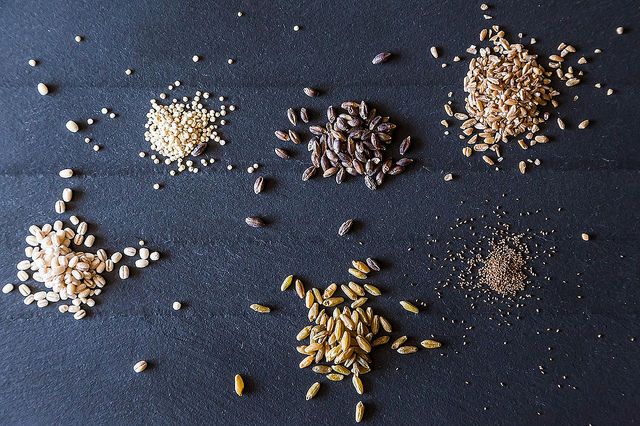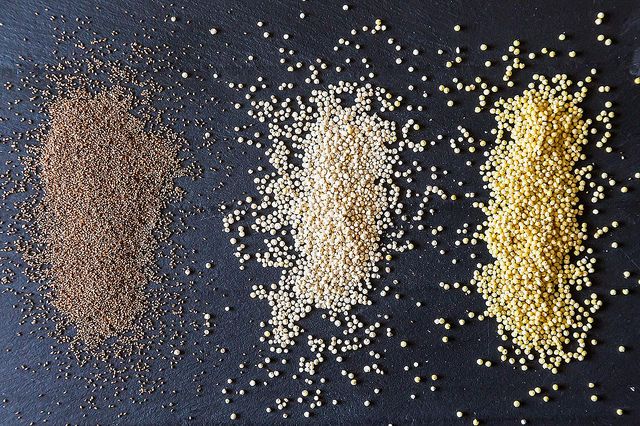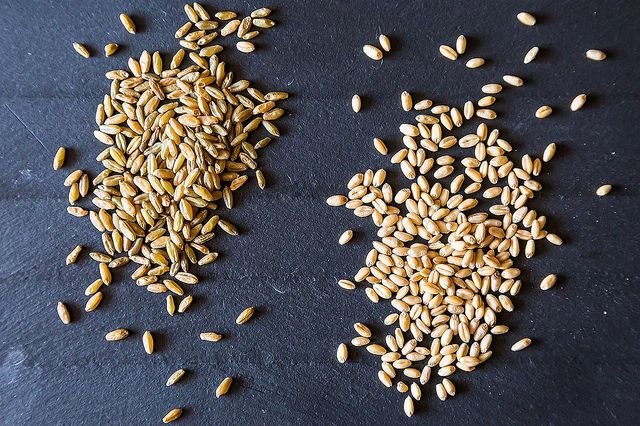Inspired by conversations on the Food52 Hotline, we're sharing tips and tricks that make navigating all of our kitchens easier and more fun.
Today: We introduce a variety of grains sure to keep kitchen boredom at bay.

Finding a balance of familiarity and adventure in the kitchen is always a challenge.
We want to experiment with new ingredients, acquire new skills, and try out new recipes on a regular basis. But we also know what we like, and it's tempting to revert to our favorite recipes, the ones that comfort us, the dishes we could make in our sleep.
Grains are a great area of exploration for those of us who want to try something new (or something ancient) while staying within reach of our comfort zone: use farro in arborio's stead the next time you're craving risotto, or experiment with quinoa porridge when your oats begin to feel monotonous.
If you want to switch up your grain routine, we're here for you -- we've reviewed some of our favorite grains and detailed the best ways to use them. Add a few into your weekly routine, and you'll give any kitchen boredom a swift kick in the pants.

The little guys: teff, quinoa, and millet
Teff
Think of Teff as the Tiny Tim of grains: small but mighty. It clocks in as the world's tiniest grain, with one gram of teff holding three thousand little grains. Native to Ethiopia and over 4,000 years old, it's most commonly ground into flour and used in Injera, that spongy bread-slash-utensil that's served with everything at Ethiopian restaurants.
Teff has a deep, nutty flavor that's somehow reminiscent of a molasses-ginger cookie, but for all of that nuance it cooks up in just 15 minutes flat. Our favorite preparation is teff porridge: cook one cup of teff with 2 cups milk, 1 cup water, and a pinch of salt, plus whatever sweeteners and spices you fancy -- we like maple, cinnamon, and cardamom. Alternatively, you can use teff flour in gluten-free baking -- or get ambitious and make your own injera.
Quinoa
You know quinoa! It's the belle of the ball, the talk of the town. It's the new black. And it doesn't even belong in this article! It's a seed, not a grain, but it's so versatile and fluffy and delicious that we will overlook that fact for the time being.
Pronounced keen-wah, this little seed -- harvested in the Andes of South America -- boasts a slew of nutrients, and it cooks in a mere fifteen minutes. Just bring a cup of quinoa and two cups of salted water to a boil, then let it simmer until all the water is absorbed and the quinoa is fluffy. Be sure to rinse your quinoa before cooking -- it's coated in saponin, which imparts a slightly bitter flavor. We love it in pilafs, veggie burgers, and even corn muffins.
Millet
Let's get this out of the way: millet is commonly used in bird seed. But it makes some great human food, too. Yellow and round, millet boasts a unique texture when cooked that lands somewhere between fluffy and pleasantly chalky.
When cooked in 2 cups of water for each cup of dried grain, the result is ideal for a pilaf, where 3 cups of water will give you more of a polenta-like porridge. Try toasting it lightly before adding cooking water to deepen millet's mild flavor. Try adding cheese for a creamy, chewy savory breakfast, or tossing it with roasted chickpeas and veggies for a sturdy salad that's perfect for lunch.

Wheat, two ways: freekeh and wheatberries
Freekeh
Freekeh -- pronounced freek-ah -- is made from green wheat, and harvested when the grains are yellow and the seeds are still soft. It's then dried in the sun, and then set on fire! The young seeds' high moisture content keeps them from burning -- instead, the seeds roast and acquire a bold, smoky, nutty flavor that plays well in grain salads. Freekeh also has killer nutritional stats.
To cook, bring 5 cups of water and 2 cups of freekeh, plus some salt, to a boil. Then let it simmer away -- if you're using cracked freekeh, this will take 15 minutes, but for whole grain varieties, you should simmer for 45.
Wheatberries
Wheatberries are whole wheat kernels -- the same ones that can be ground into whole wheat flour. Their hardiness means they take a little while to cook -- but all you've got to do is simmer them in salted water for an hour and drain.
This is the kind of grain that chews back at you -- in a good way. Dense and nutty, wheatberries plump up when cooked and hold their own when added to chunky salads or used to top puréed soups.
More: See how one pot of wheatberries can give you a week's worth of dinners.

Quick-cooking and chewy: bulgur and farro
Bulgur
When wheatberries are cracked, then parboiled, then dried, they become bulgur. Small and chewy, bulgur is the main ingredient in tabbouleh.
Farro
There is much confusion and disagreement about exactly what farro is -- Italians have to differentiate between its small, medium and large varieties. In the United States, what you'll find at the market looks similar to long-grain brown rice, but with a dry, powdery coating you'll want to rinse off before cooking. Cook it for just fifteen minutes in double the amount of water.
Give it a try, and farro might become your new favorite grain. It retains a good amount of chew, but it's softer than wheatberries; it's earthy and nutty, with a flavor similar to brown rice, but it also retains a lightness that make it ideal for summery salads. Pair it with mushrooms, or tomatoes, or leeks -- the possibilities are endless.

Not just for beer: pearled barley and black barley
Barley
Those of us who love beer already consume barley regularly -- just in a different, fermented state. When cooked whole, though, barley adds bulk to mushroom soup and adds lovely texture to summer salads.
Pearled barley (above left) has been polished, which gives it that pretty, round shape, but there are a number of other varieties you'll find for sale: black barley (above right), hulled barley, and scotch barley are all worth trying, too. Most barley takes about 30-40 minutes to cook, and requires 2 1/2 cups of water for each cup of grains.

Jasmine rice, brown rice, and wild rice -- which isn't rice at all!
Rice
We could write a novel on rice. An encyclopedia, even! But we won't. We'll just direct you to our previous articles on how to cook it and the different varieties out there. Now go forth and conquer.
Photos by James Ransom
Read more:
Oats in All Their Many Forms
April Bloomfield's English Porridge
One Pot of Quinoa, Five Dinners
Tell us: what are your favorite grains?







See what other Food52 readers are saying.